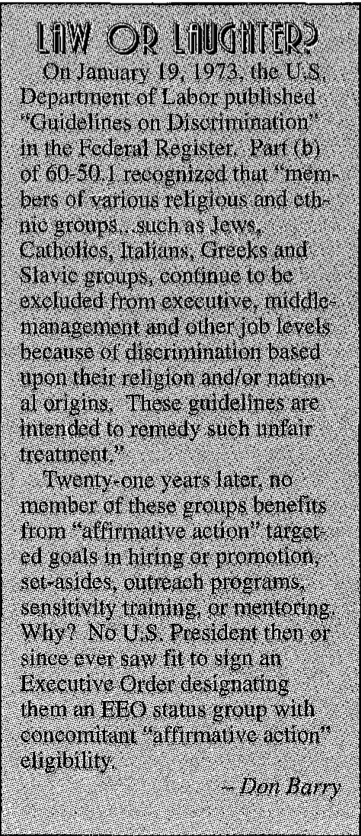Workplace discrimination against Catholics is still with ns. To be sure, most Catholics do not make an issue of their religion on the job. Nor should they. But that doesn’t mean that external manifestations of Catholicism should be hidden from the workplace. Here are two examples: it is customary on Ash Wednesday for Catholics to report to work with ashes on their forehead. Similarly,there is nothing wrong with Catholics displaying a holy picture on their desk. Yet actions were recently taken against employees in Georgia and New York for both “offenses.” We got involved in both cases.
Not too long ago, detective Mark Clay of LaGrange, Georgia became a Catholic. On Ash Wednesday he reported to work with ashes on his forehead. He was quickly told to remove them on the grounds that fellow workers were complaining and he was disturbing the workplace. But aside from Clay’s supervisor, no one registered any complaint. Clay refused to remove his ashes, citing his First Amendment right to freedom of religion. He was then suspended for a day without pay.
When Mark Clay contacted me about this I wrote to all of those involved in the appeal process: his supervisor, the grievance committee officials, members of the LaGrange City Council and Mayor Woodall. I let them know that unless justice is done, the Catholic League will sue on Mr. Clay’s behalf.
The other case is already over. On April 11, David Hubicki, a temporary employee at the Department of Civil Service in Albany, New York, was ordered by his supervisor, Imogene Bessette, to remove a 3×5 picture of the Sacred Heart of Jesus from his desk. When he protested, he was told that there was a department-wide rule barring the display of religious symbols in the workplace. Mr. Hubicki contacted the Catholic League and I immediately called John Sossey, the Director of Personnel at the Department of Civil Service. After explaining what the Catholic League does, I had but one question: I wanted to see a copy of the rule. Mr. Sossey got my point and called a few days later to tell me that a “mistake” had been made and that Mr. Hubicki was free to put the picture back on his desk.
Cases like these are troublesome for several reasons. Here we are in a decade that is renowned for tolerance, compassion, sensitivity, diversity and the like – these are the favorite buzz words o f the cultural elite – and yet some Catholics can’t wear ashes on their forehead and display holy cards on their desks. The same decade that awards new rights to homosexuals and animals, retreats on old rights granted to Catholics. Something’s amiss.
What is even more disturbing is the fact that the Equal Employment Opportunity Commission (EEOC) is presently considering
No one is suggesting that Catholics wear their religion on their sleeves.
But it is equally important for Catholics not to be defensive abouttheirreligion. The First Amendment guarantees freedom of religion and freedom of speech. Equal protection before the law is encoded in the Fourteenth Amendment. That’s a lot of ammo. It’s time we used it against the bigots wherever they are, including, if necessary, against the EEOC.







